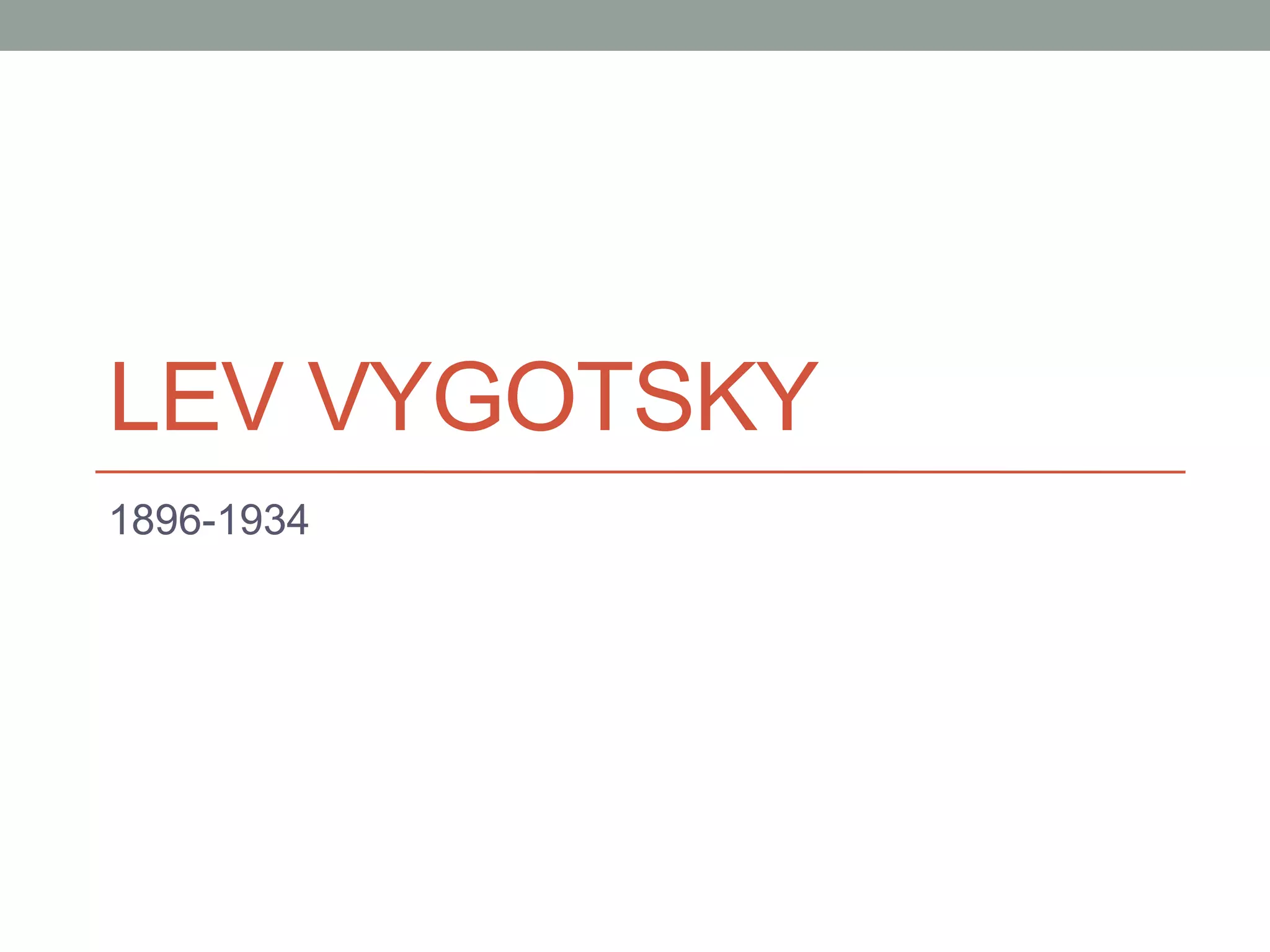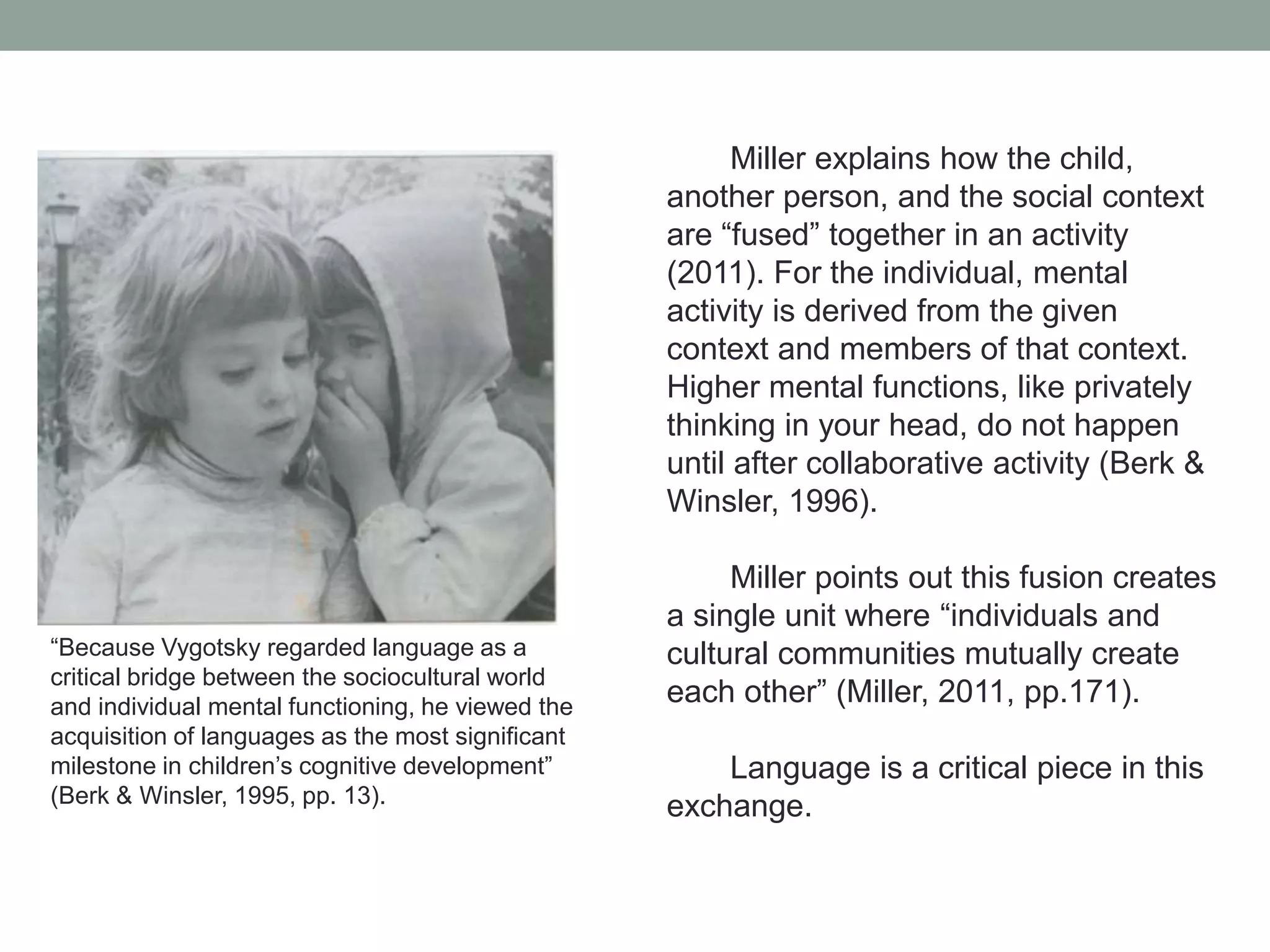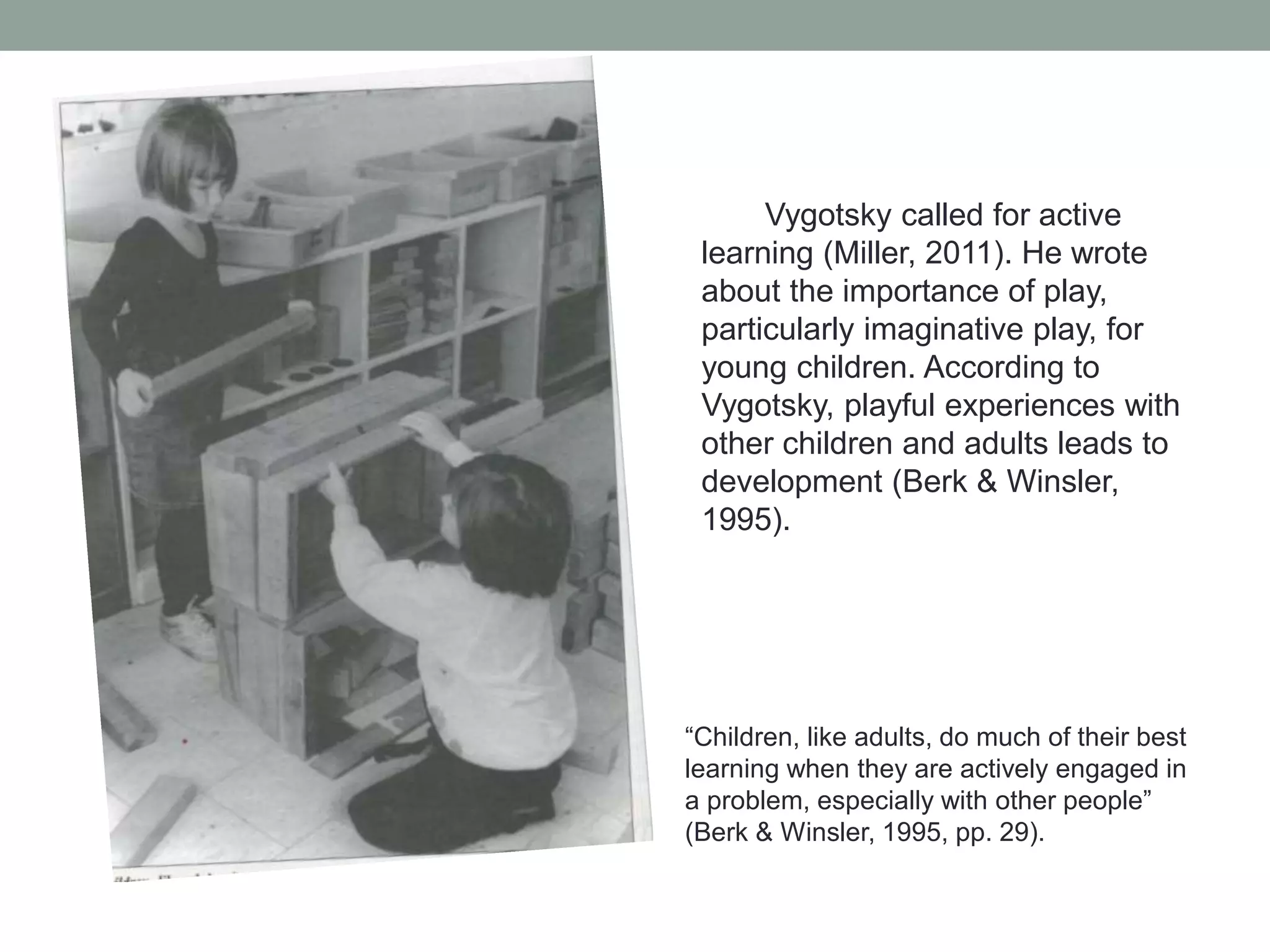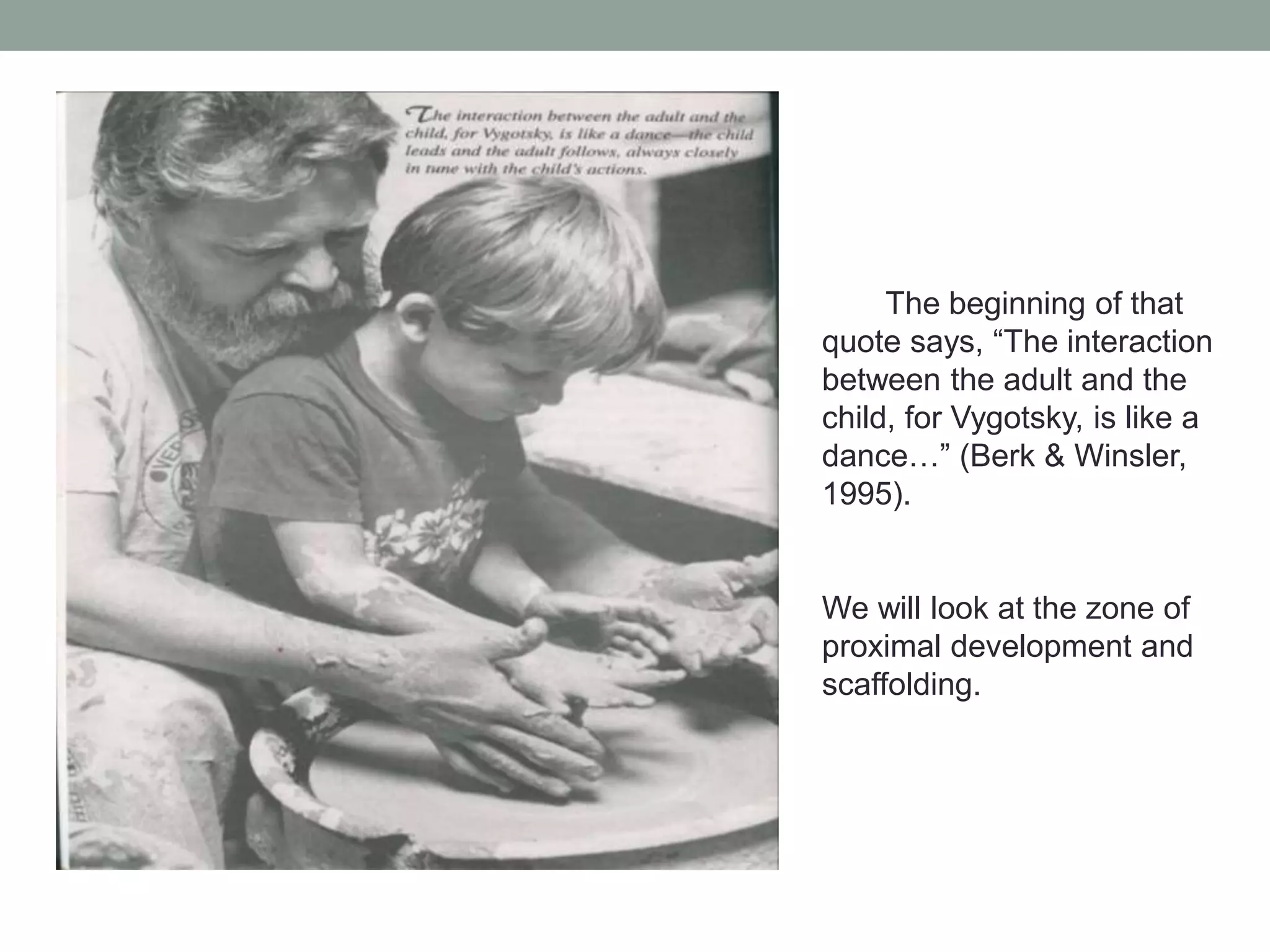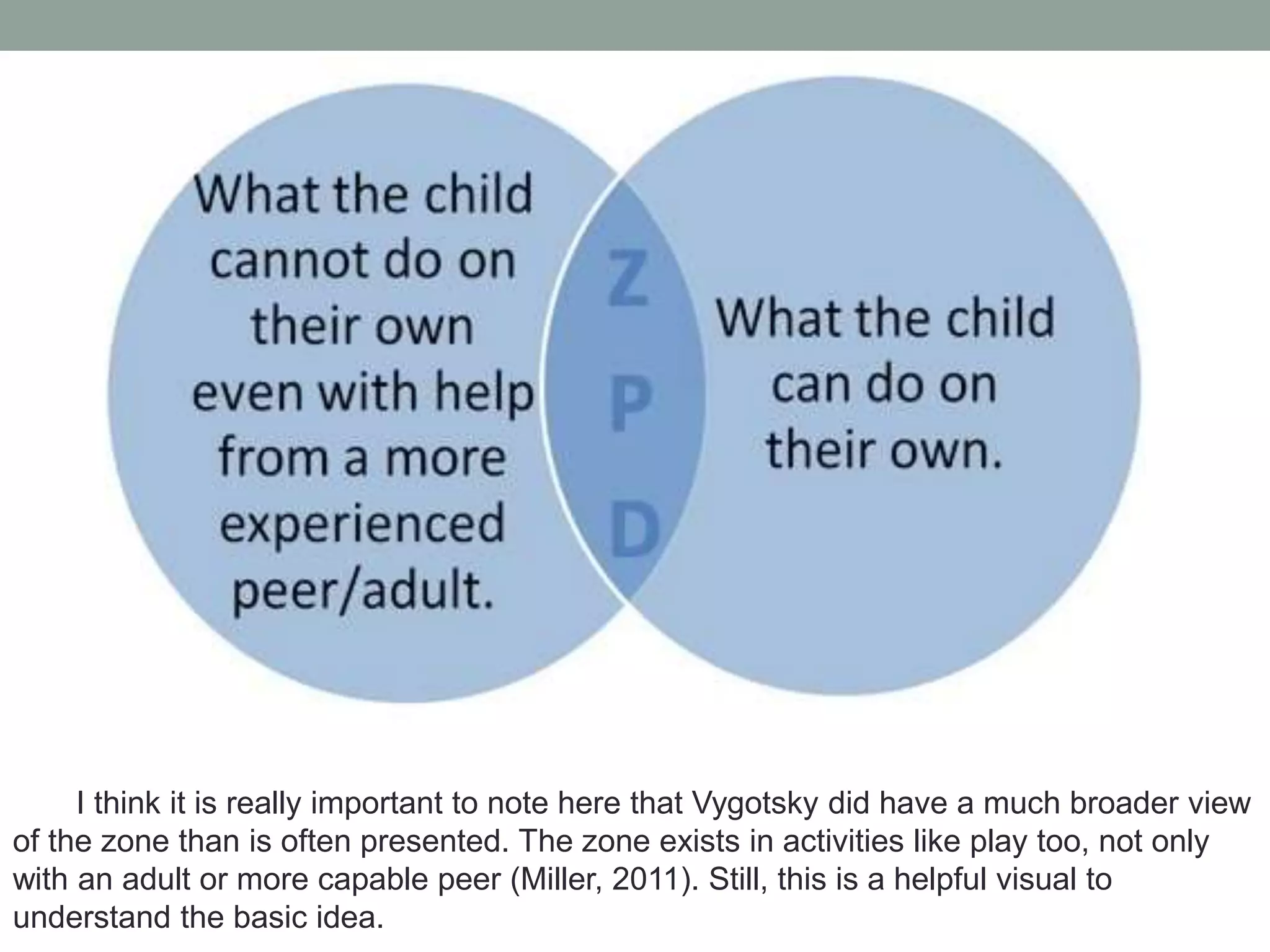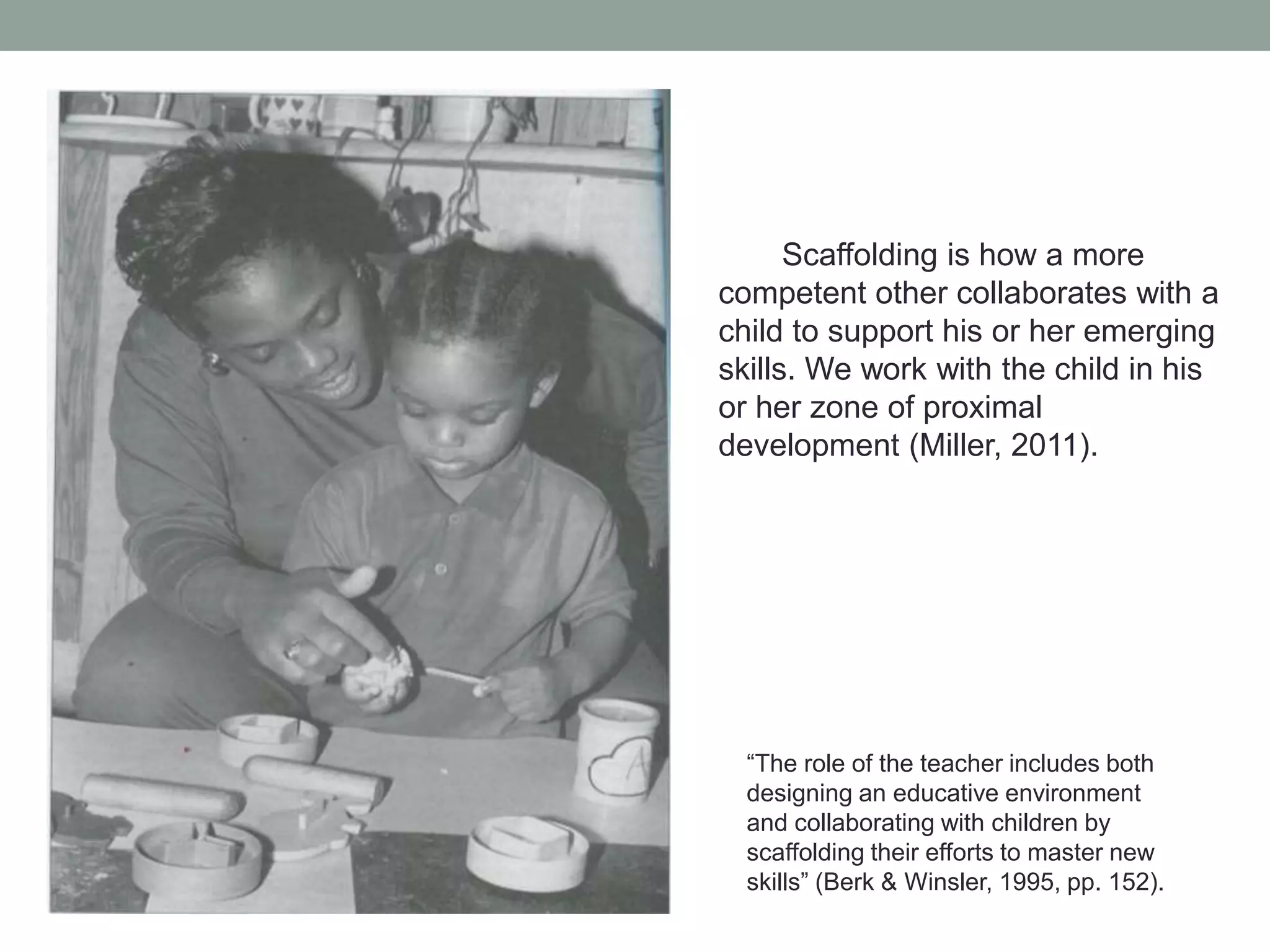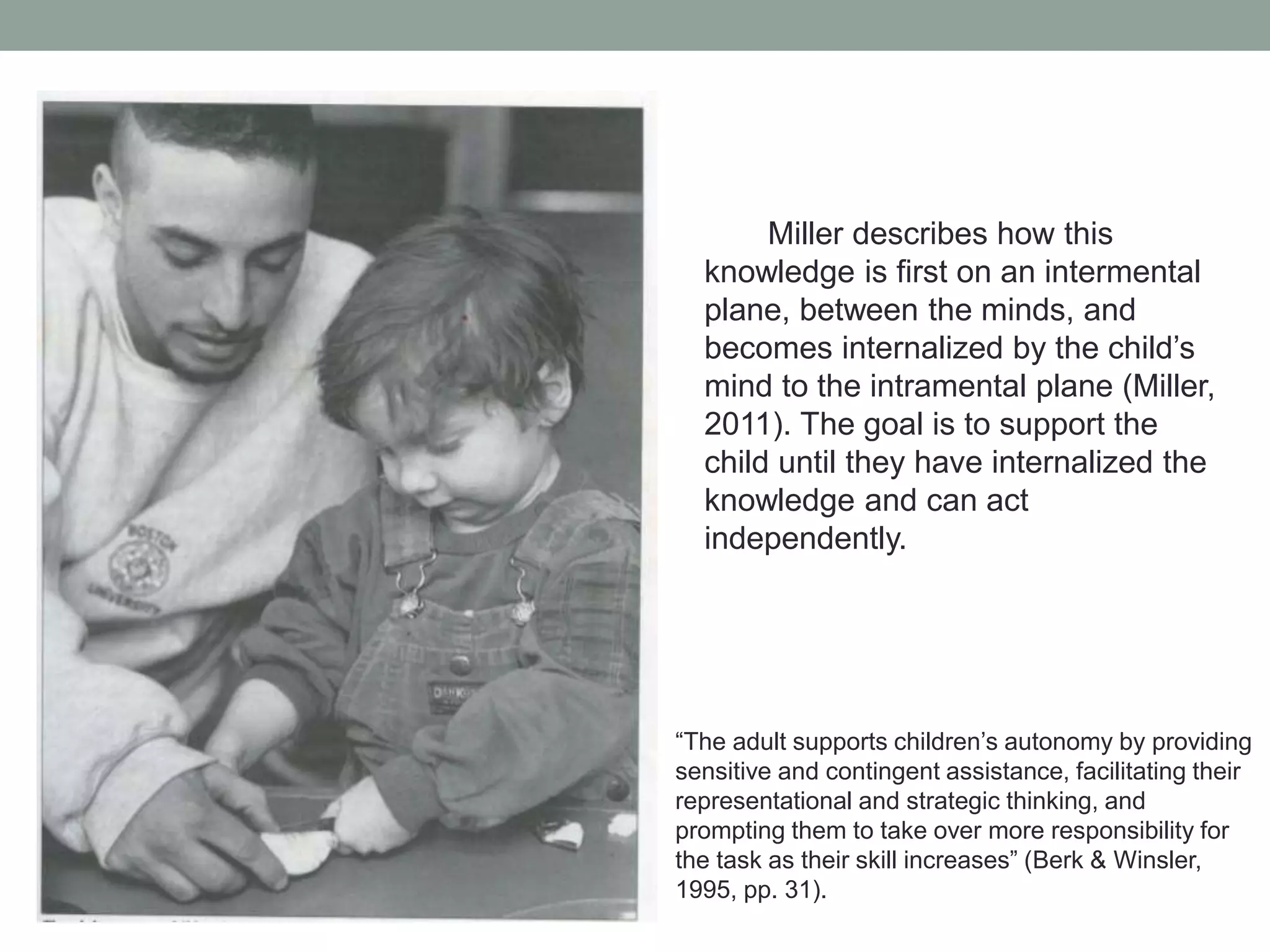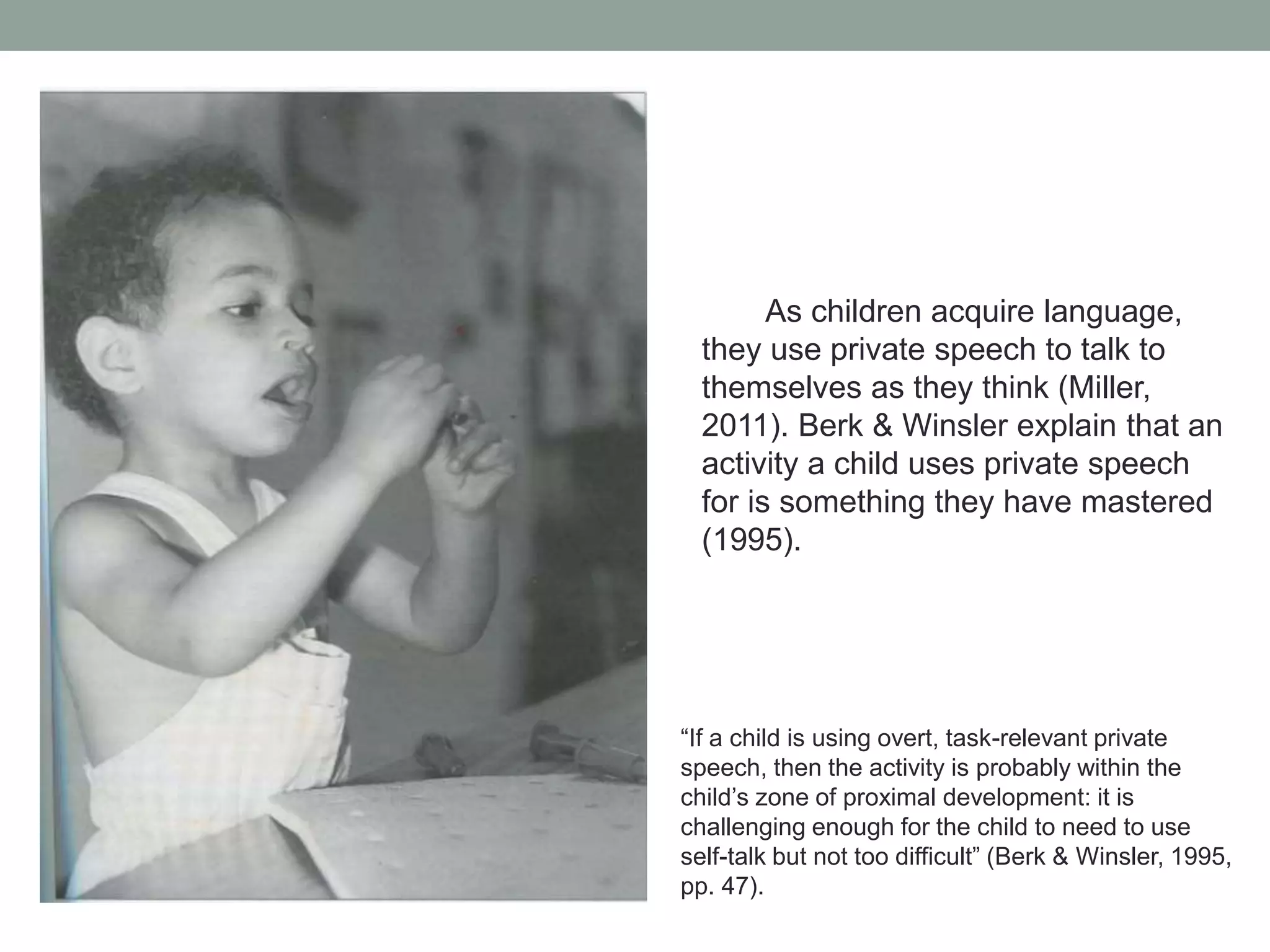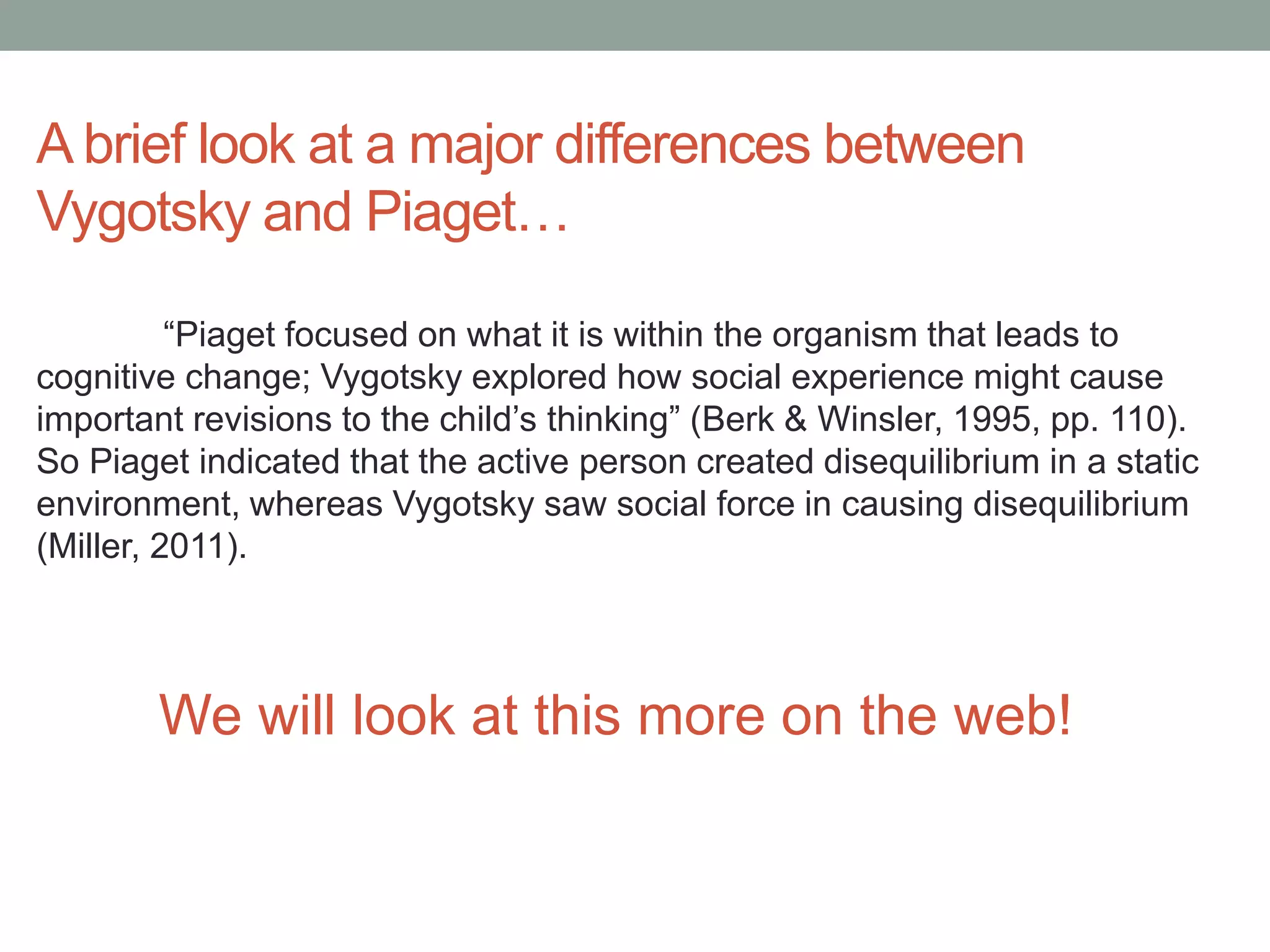Vygotsky was a Russian psychologist who developed the sociocultural theory of cognitive development. He believed that social interaction and cultural tools shape children's thinking and that mental functions develop through collaborative activities. For Vygotsky, language acquisition is key to cognitive growth, allowing children to internalize social and cultural ways of thinking. He studied how children's abilities develop in their zone of proximal development through scaffolding provided by more knowledgeable others.
